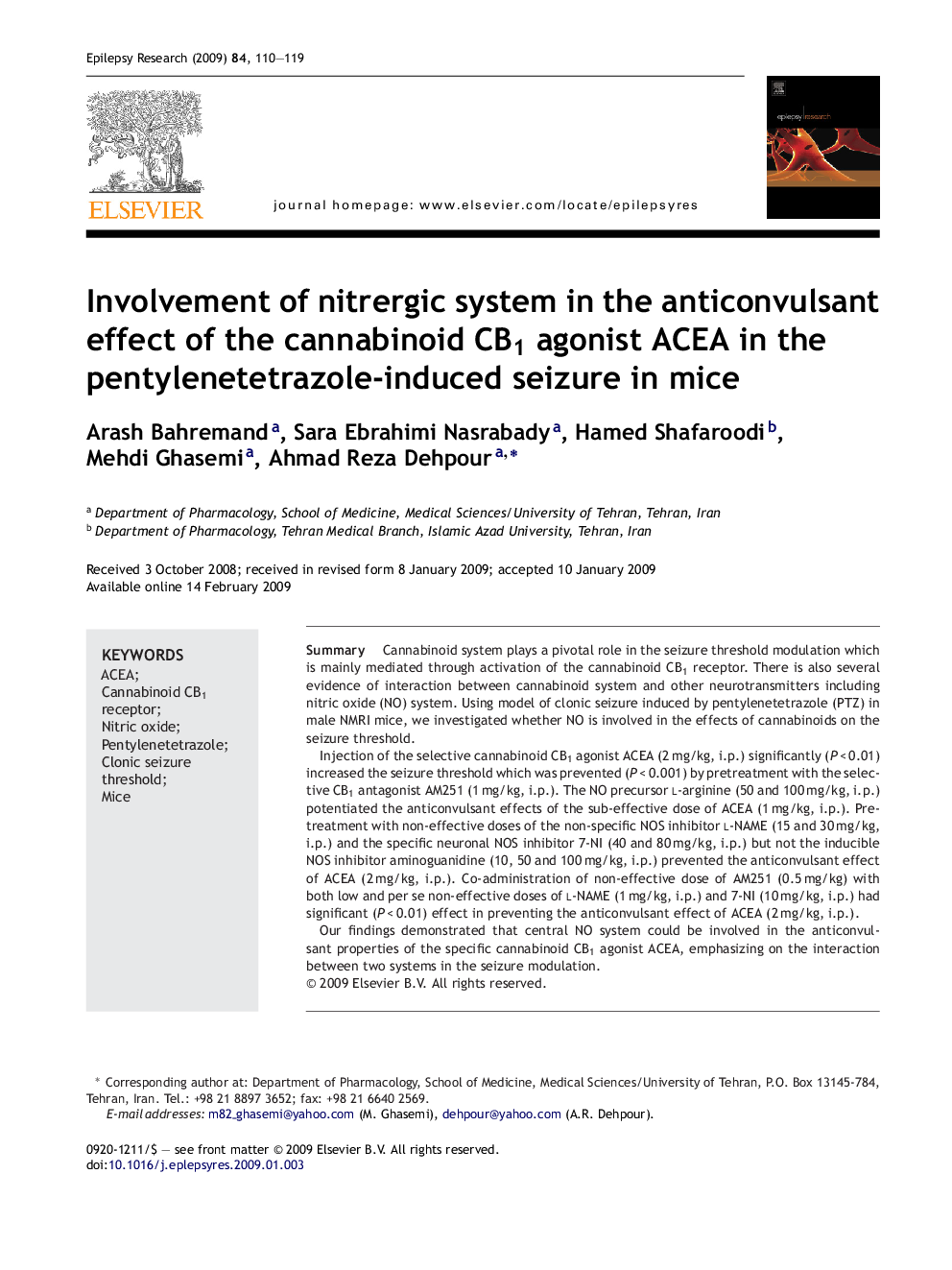| Article ID | Journal | Published Year | Pages | File Type |
|---|---|---|---|---|
| 3052810 | Epilepsy Research | 2009 | 10 Pages |
SummaryCannabinoid system plays a pivotal role in the seizure threshold modulation which is mainly mediated through activation of the cannabinoid CB1 receptor. There is also several evidence of interaction between cannabinoid system and other neurotransmitters including nitric oxide (NO) system. Using model of clonic seizure induced by pentylenetetrazole (PTZ) in male NMRI mice, we investigated whether NO is involved in the effects of cannabinoids on the seizure threshold.Injection of the selective cannabinoid CB1 agonist ACEA (2 mg/kg, i.p.) significantly (P < 0.01) increased the seizure threshold which was prevented (P < 0.001) by pretreatment with the selective CB1 antagonist AM251 (1 mg/kg, i.p.). The NO precursor l-arginine (50 and 100 mg/kg, i.p.) potentiated the anticonvulsant effects of the sub-effective dose of ACEA (1 mg/kg, i.p.). Pretreatment with non-effective doses of the non-specific NOS inhibitor l-NAME (15 and 30 mg/kg, i.p.) and the specific neuronal NOS inhibitor 7-NI (40 and 80 mg/kg, i.p.) but not the inducible NOS inhibitor aminoguanidine (10, 50 and 100 mg/kg, i.p.) prevented the anticonvulsant effect of ACEA (2 mg/kg, i.p.). Co-administration of non-effective dose of AM251 (0.5 mg/kg) with both low and per se non-effective doses of l-NAME (1 mg/kg, i.p.) and 7-NI (10 mg/kg, i.p.) had significant (P < 0.01) effect in preventing the anticonvulsant effect of ACEA (2 mg/kg, i.p.).Our findings demonstrated that central NO system could be involved in the anticonvulsant properties of the specific cannabinoid CB1 agonist ACEA, emphasizing on the interaction between two systems in the seizure modulation.
